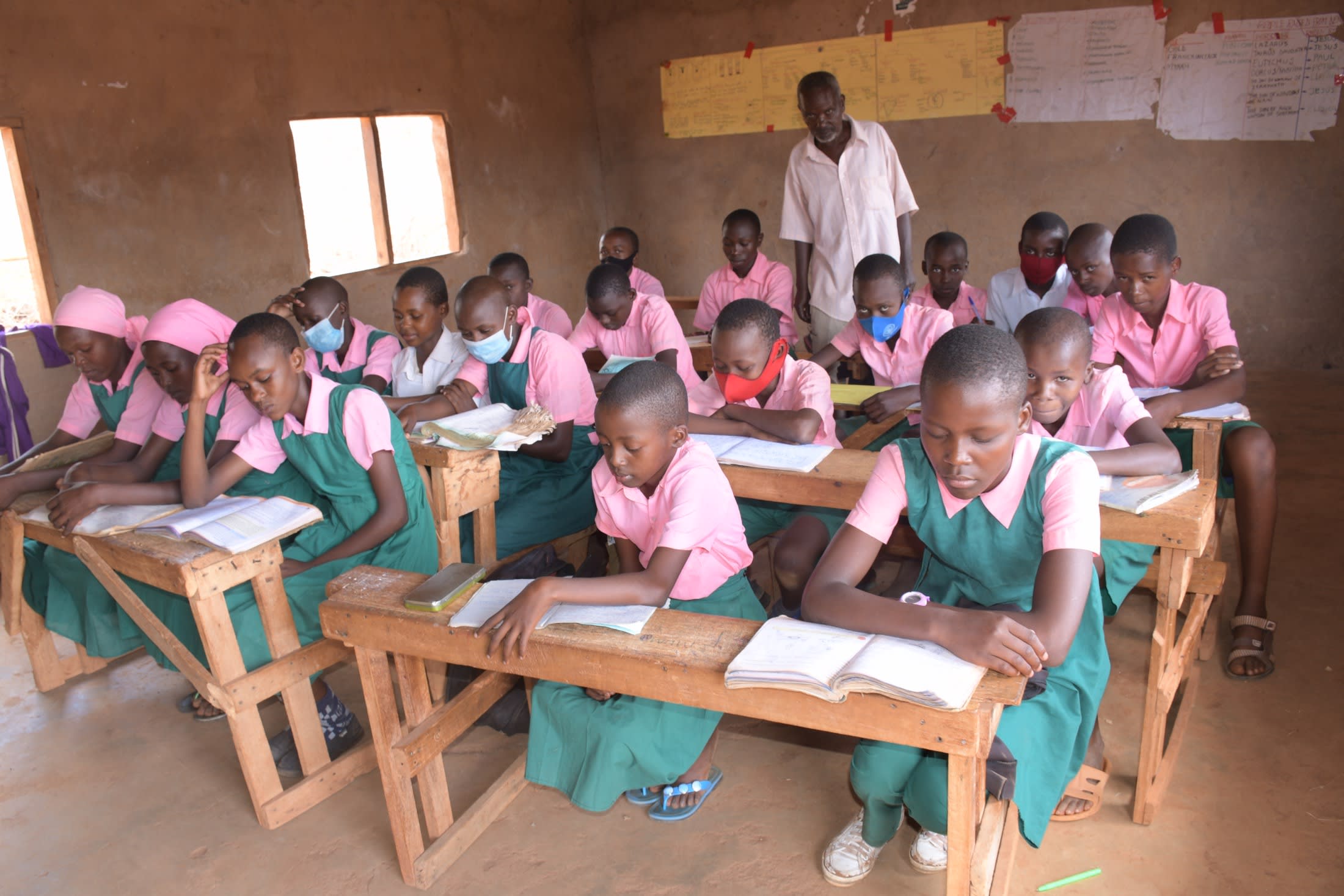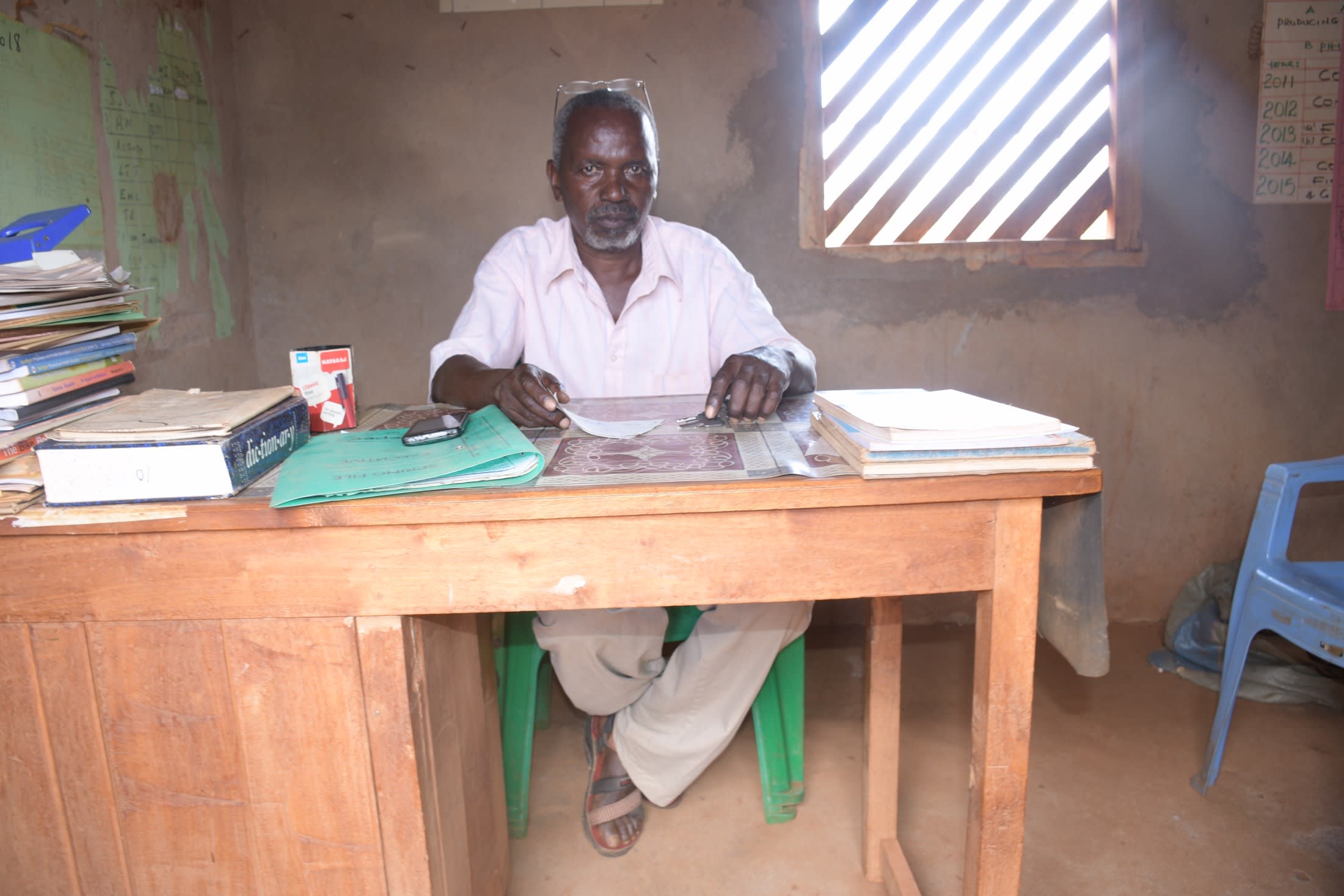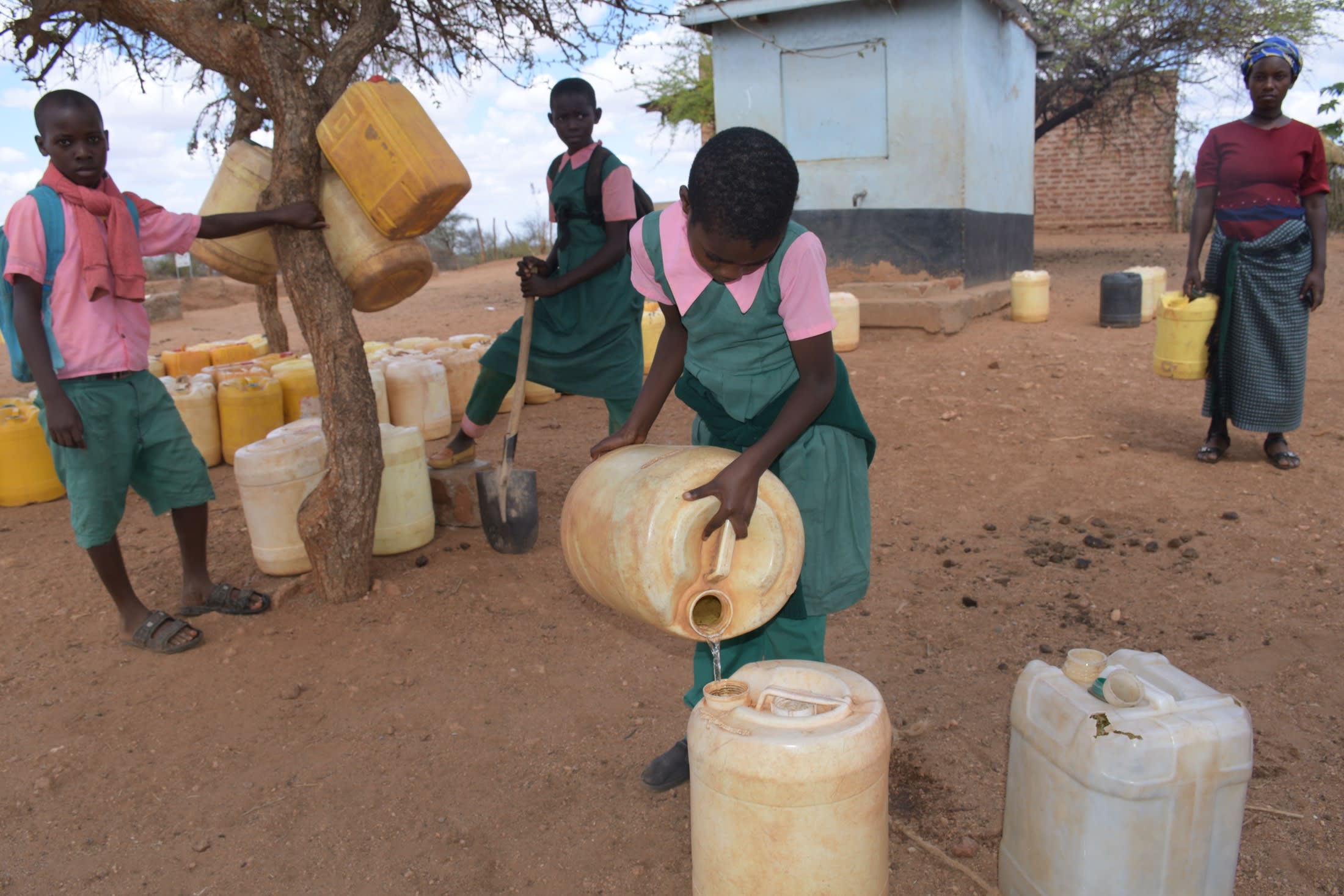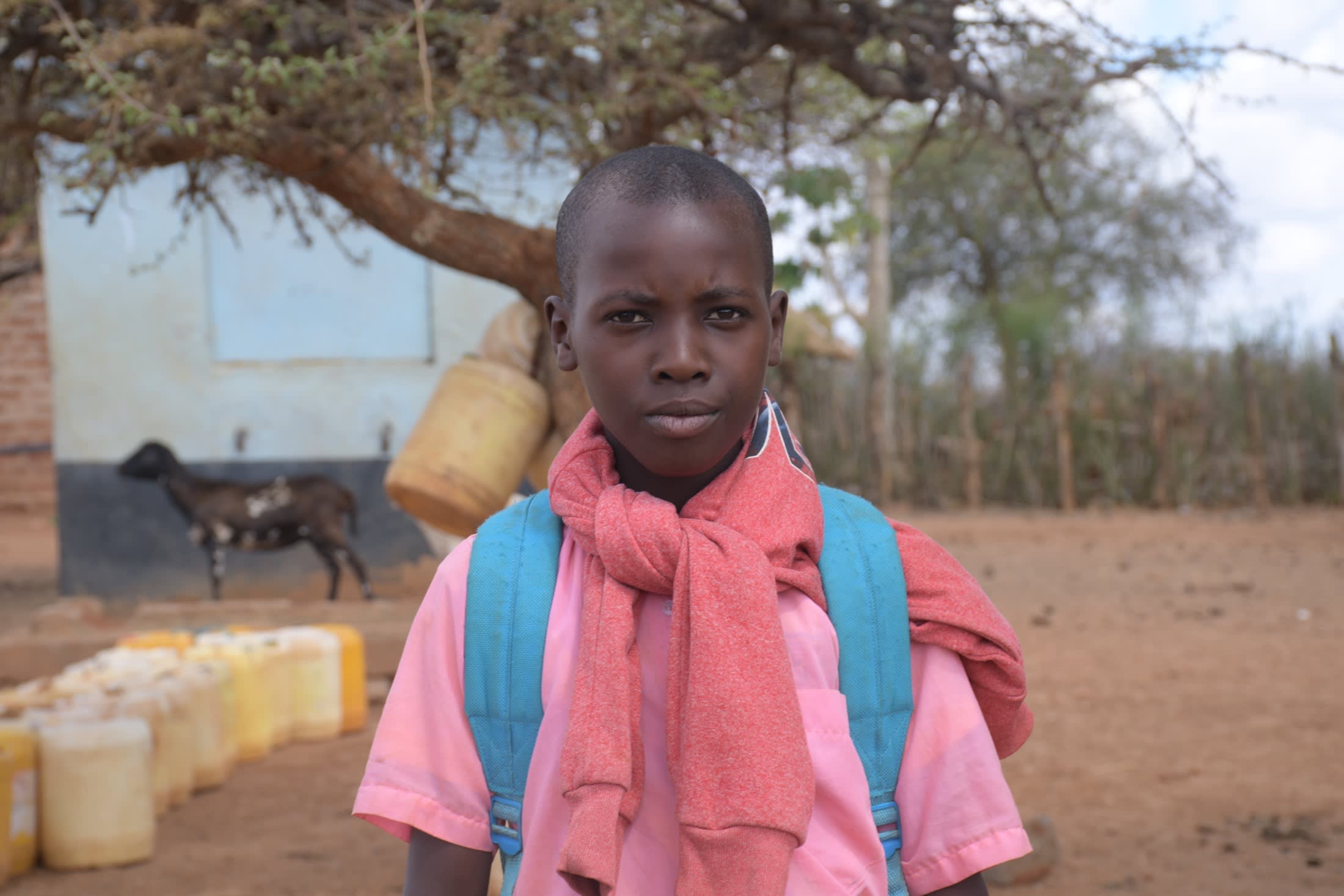Kalaa Primary School's 145 students and ten teachers face a severe water crisis each day.

Due to the immense water scarcity in the region, the community's water sources are overcrowded, providing limited amounts of water. During the dry season, things are even more challenging.
"This school suffers from acute water scarcity, which has led to dismal academic performance because the pupils spend a lot of time and energy carrying water to school rather than focusing on their studies," said teacher Kithome Mwenga, shown below. "Some students are late to school every day because they have to carry water to school for several kilometers."

The school has a 10,000-liter water tank, but it cannot hold enough water to meet the demand of the large student population. The school administration is forced to ration the water, leaving everyone thirsty and the school's sanitation and hygiene suffering.
To fill the small tank, students most often collect water from scoop holes near their homes and carry it several kilometers to the school. The tiring journey not only makes them late, but leaves them exhausted and without the energy to face the school day ready to learn. The scoop holes are open to contamination, and regardless of the effort, the water collected is questionable at best.

Sometimes students acquire water from a community standpipe (shown in the background above) instead. But this is three kilometers away from the school, the lines are long, and it runs dry from overuse and drought conditions. Also, the water they collect from this source is salty and should not be used for cooking or drinking.
"Getting water to bring to school is difficult because the public stand tap and scoop holes are seasonal and run dry during peak drought periods. I have to walk for about two kilometers carrying water, firewood, and [my] school bag, which drains most of [my] energy, making learning difficult," said student Onesmus M., shown below. "For instance, last week, I dozed off in class, and the teacher made me sit [in] the front seats, but that did not help. I was forced to go outside and take a walk before resuming the class session."

As an alternative, the school can purchase water delivery, but this drains an already depleted school fund and steals from other valuable needs.
Wherever the water comes from, it is unsafe for drinking, and those consuming it are paying the price with their health. There are regular stomachaches reported alongside cases of typhoid, amoeba, or dysentery.
The installation of a larger, 104,000-liter rainwater tank will ensure the school has enough clean water, and hopefully, students will have better health, more time to study, and the energy needed to improve their academic performance.
Rain Tank
We will build a 104,000-liter rain tank for this school, making the others look tiny in comparison. Because of how rarely it rains in Southeastern Kenya, this tank's large volume is designed to store as much water as possible during the seasonal rains, making more water available through the dry months. This water will benefit the students, teachers, and supplementary staff.
Parents will mobilize the materials needed for construction, including sand, stones, and water. They will also lend their strength and time to help with the construction. We will complement their materials with a skilled artisan to lead the project in addition to providing the tools, lumber, metal, cement, and gutter system.
As soon as the tank has time to cure, it can begin collecting rainwater for the school's use.
Training
We will train students and staff on sanitation, hygiene, and other topics for 1 day. Those in attendance will form a school health club that will promote good hygiene and sanitation practices both at school and at home. They will learn all of the steps to proper handwashing, how to treat water, and how to keep their environment clean. The school will also be taught how to best oversee and maintain their new rain tank and handwashing stations.
Handwashing Stations
A total of 3 handwashing stations will be installed upon the project’s completion and before training. These are 1,000-liter plastic tanks fitted with 3 taps each, allowing 9 students to wash their hands at once. The student health club and school management will be responsible for making sure the tanks are filled with water and that a cleaning agent such as soap or ash is always available.

 Rainwater Catchment
Rainwater Catchment
 Rehabilitation Project
Rehabilitation Project































